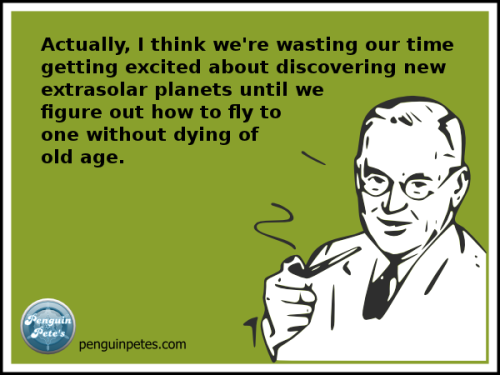Tuesday, October 30, 2012
Saturday, October 27, 2012
Acta Diurna: The first blog
Every modern journalist - indeed, the entire concept of the Internet itself - owes a debt to the Acta Diurna. Latin for "Daily Acts", it was the first "newspaper" of known civilization. Most people probably know that we get our word "forum" from the Roman term of the same name for a common gathering place where people could discuss the day's events.
However, most people don't realize just how literally this maps to our news forums and blogs today. From the History of Information site:
"Copies of Acta Diurna ("Daily Events", or the "Daily Public Record"), were carved on stone or metal and presented in message boards in public places like the Roman Forum beginning about this time.][These are thought to be the first daily gazettes."
The content very much fit our modern definition of news. Outcomes of court proceedings, public notices and announcements, marriages, births, and deaths, were all part of the daily newsfeed. And furthermore, the Acta Diurna was rotated as new daily installments came in, with the previous tablets stored in an archive (sounding more like a blog now?), and scribes would also make copies of the news and then send them out to remote outposts such as provincial governors. (So, yes, you read that right, they even had a way to "subscribe to an RSS feed"!)
This was actually a major step in Roman government. At this time in Roman history (130 BCE) Rome was transitioning from a pure monarchy to a republic. In so doing, the Acta Diurna was one sign that government had become more open - the business of ruling was no longer a secret affair confined to the inner circle of the ruling class, but the people's business, to be freely shared and discussed in the open. Furthermore, the common rabble were free to discuss the affairs of state right alongside the politicians - an unheard-of lenient policy that informs our modern notion of "freedom of speech" and "freedom of the press".
Wednesday, October 24, 2012
Tuesday, October 23, 2012
The eventual fate of Rainbow Man of John 3:16 fame
Remember him?
Rollen Stewart, better known as "Rainbow Man", made a flaky career out of appearing at sporting events with a rainbow clown wig, holding up signs with Bible quotes and generally making a pest of himself by mugging for the camera every time it passed his way. In the '70s and '80s he got quite famous, even up to getting his own Budweiser beer commercial (for a guy doing Bible quotes?) and Christopher Walken playing him in a sketch on Saturday Night Live.
But people bitten by sudden nostalgia for the lovable loony will be disappointed in his later adventures. Stewart showed increasingly unstable behavior, having been married four times and committed at least one reported act of domestic violence. But then, as told by The Straight Dope:
"He set off a string of bombs in a church, a Christian bookstore, a newspaper office, and several other locations. Meanwhile he sent out apocalyptic letters that included a hit list of preachers, signing the letters 'the Antichrist.'"
" On September 22, 1992, believing the Rapture was only six days away and having prepared himself by watching TV for 18 hours a day, Stewart began his last "presentation." Posing as a contractor, he picked up two day laborers in downtown LA, then drove to an airport hotel. Taking the men up to a room, he unexpectedly walked in on a chambermaid. In the confusion that followed he drew a gun, the two men escaped, and the maid locked herself in the bathroom. The police surrounded the joint, and Rollen demanded a three-hour press conference, hoping to make his last national splash. He didn't get it. After a nine-hour siege the cops threw in a concussion grenade, kicked down the door, and dragged him away."
The upshot of that is he is currently serving three consecutive life sentences. He was also the subject of a 1997 documentary Rainbow Man, directed by Sam Greene. A clip:
...and there goes another tragic monkey devoured by the media.
Sunday, October 21, 2012
A hot gallery of sun gods
Belenus
The Celtic sun god, observed in Gaul, Cisalpine Gaul, and Celtic areas of Austria, Britain and Spain. Variation of Apollo. BeleniX, an open-source Solaris distro (now defunct), is named in his honor.
Freyr
The Norse Pagan sun god, also widely renowned for being a phallic fertility god. It's really, really hard to find depictions of him that don't involve a dick, dildo, or other suggestive depictions. Even here, you've doubtless noticed that big ol' sheathed sword he's lugging around. Oh, that's his wild boar, an indispensable sidekick.
Horus
The ancient Egyptian god, great-daddy of all gods and more like the god of the sky - the sun was his right eye and the moon was his left. Since sky = flight = birds in Egyptian parlance, he's usually depicted as a man with a falcon's head. The symbol of "the Eye of Horus" is still today the most iconic symbol of Egyptian mythology. However, you could just as easily nominate Aten or Ra as the Egyptian sun god - they were all intertwined, Egyptian theology being a very convoluted subject.
Moloch
A bit scarier than your average sun god, Moloch was worshiped by
Canaanites, Phoenician and the general neighborhood in North Africa. He's got something of a bad-ass reputation, even a Satanic one, because he's one of the few gods expressly forbidden by name in the Christian Bible. Leviticus names worship of Moloch as yet another stoning offense not once, but twice. Jeremiah again mentions him as the sub-fire-god under Ba'al. In fact, wherever the Bible speaks out against idolatry, it's pretty much talking about this guy. The scary part is, his worshipers sacrificed human children to him.
Sol
Well, now, we're probably on familiar ground here, right? Yes, the Roman sun god is the very same from which we draw all root words referencing the sun in English and most Western culture. Sol was the sun, Luna (another Roman hand-me-down name to English) was the moon, and Janus was related, being the two-faced god of transitions, beginnings, and endings, and hence invoked with the rise and set of the sun and moon. And also hence, we name the first month of the year January in Janus' honor, because that's when the year turns over.
Surya
The Hindu sun god, also the head of all sky gods and again, associated with general fertility, nature-worship, fire, etc. Still very much actively observed in Hindu circles today; he has temples with services attended at dawn and everything.
%
Solar deities are simply a dime a dozen, the complete Wiki on them here.
Here's a thought to all this: Isn't it an interesting coincidence that every part of the world founded its own religion based on the brightest object in the sky? Certainly, if one is compelled to identify the natural object most likely to be the embodiment of a deity, the sun fits the bill. But what superstitious monkey-minds we have! When we consider the vast array of sun gods and the remarkable similarities in ideas about them, it tells us much, much more about how the human mind works than we'd care to admit.
And before you get too smug thinking that the God of Jews, Muslims, and Christians is any different, and hence (if you observe one of these faiths) not at all based on silly star-worship, take a gander at "Jesus Christ in comparative mythology" and ask yourself why "Sunday" is observed as "the Lord's day" and Christ's birthday is celebrated at the winter solstice.
But here's a far more complete article on sun worship and its place at the roots of modern religion, courtesy of The Review of Religions.
Not so smug now, are you?
Saturday, October 20, 2012
Friday, October 19, 2012
Terry Gilliam's very first deranged animation
Storytime is an animated short by Terry Gilliam, showing the same brand of bent humor and whimsical animation that would one day become a staple of the Monty Python series. Gilliam having done a number of mind--blowing films in the years since, this belongs here.
Labels:
60s,
animation,
art,
crazy awesome,
culture,
film,
history,
surrealism,
video,
YouTube-poop
Sunday, October 14, 2012
The first solar-powered boat to circumnavigate the globe
This impressive-looking craft is the ocean-borne chariot of one Raphael Domjan, a captain who has piloted it all around the world, completing a new world record upon accomplishing this feat in 584 days at a distance of over 37,000 miles.
Gives me another opportunity to point out how far solar-powered vehicles have come, and yet we still have to spend $20/day on gas in the US just to drive a car.
Friday, October 12, 2012
Have you met my friend Jenny?
Jenny Haniver, that is. These charming little devilish creatures are made from dead sea life such as rays and skates, taking advantage of their natural features. They're dried and then carved or shaped into natural poses to suggest demonic mermaid-like life. The 16th-century Swiss naturist Conrad Gessner was a known fan of the dolls.
Labels:
animal,
animutation,
art,
creepy,
cryptozoology,
culture,
hobbies,
mermaid,
oddities,
weird,
zoology
Tuesday, October 9, 2012
Barbie collectors take note:
Labels:
creepy,
culture,
experimental,
hobbies,
media,
rebel,
street art,
weird
Sunday, October 7, 2012
The flying fox bat aka Pemba
The Pemba is a species of megabat native to Tanzania (east side of lower Africa, for the geographically slow). At a six-foot wingspan, they're one of the largest bats and the perfect critter to kick off the month of Halloween.
Saturday, October 6, 2012
David Lynch started a real club based on Silencio from "Mulholland Drive"!
How arty can you get? The club is in Paris, and it really is modeled after the "Silencio" set from David Lynch's Mulholland Drive, along with numerous elements from other Lynch works. Awesome full story here.
Labels:
2010s,
art,
avant-garde,
crazy awesome,
culture,
fantasy,
film,
trivia
Cryptozoology's big disappointment, the Fiji Mermaid
The Fiji Mermaid, often ranked today as one of the top ten science hoaxes, was a hoax exhibited by P.T. Barnum at sideshows. It was later revealed to be a top half of a monkey sewn onto the bottom half of a fish, and rather artlessly at that.
However, one need not think that early beliefs in mermaids were entirely founded by superstition; there is a rare congenital birth deformity known as Sirenomelia, in which a baby is born with the legs fused together.
A post about it here, but be warned, some photos are shocking. And Googling the name in images isn't advised for the nervous, either.
Thursday, October 4, 2012
If you're a resident of Colma, California, you're probably dead
Colma, California, is a city with a bit of a macabre history. It was explicitly founded in 1924 as a necropolis - a city of the dead. Graves outnumber living people by as much as 1000 to 1 - and growing!
In 1900, nearby San Francisco passed a city ordinance forbidding the laying of any further cemeteries within the city limits. California being a pretty populated state, that left the question of just what to do with the dead - and so Colma because the great graveyard of San Francisco.
It's a peaceful, if somber, place to live. Just miles and miles of gravestones, crypts, plots, memorial parks, and florists, with about 330 households composed of the living, including those raising families. But the town of Colma hasn't let its largest industry dampen its spirits; in 2007 they put together an independent film called Colma: the Musical which was a smash hit on the indie film circuit.
Labels:
California,
culture,
death,
geography,
government,
mortality,
religion,
USA
Tuesday, October 2, 2012
A star with three habitable planets - and why we could get there sooner than you think!
Consider the following...
This is Gliese 581, a red dwarf star about 22 light-years from Earth in the direction of the Libra constellation. It's attracted huge attention in the scientific community the past few years, due to harboring - so far - six planets, three of which have a very good shot at having Earth-like conditions suitable for life. These three planets, c, d, and g, make up three out of the top five habitable planets given in this list. Variously, c, d, and g all make good candidates for either supporting Earth-class life already, or being a suitable place for the human race to colonize.
Now, you might be saying, "Great, 22 light-years away you say? What good is that without the Starship Enterprise?" Yes, I know. I've made similar snarky observations myself...
What if I told you that way back in 1955, an idea was proposed at the famous Los Alamos Laboratories whereby, using already-existing technology, we could have a man-made vehicle bridge a distance of 22 light-years in about 44 years? In fact the idea was suggested by Stanislaw Ulam in 1947, and further collaboration came from Freeman Dyson.
The project was Project Orion, which has now been shut down. A money quote from this section:
"A nuclear pulse drive starship powered by matter-antimatter pulse units would be theoretically capable of obtaining a velocity between 50% to 80% of the speed of light."
And - strictly in the abstract - a vehicle busting 0.5c could travel 22 light-years in 44 years. However, you do have to consider that this isn't necessarily the launch speed of the vehicle; it has to thrust for a long, long time to build up that speed. You also want to think about whether you need to stop at the end. For a fly-by or crash-into mission - which are what our first missions to the moon were - no worries there.
You might also ask "Wait, I thought antimatter was strictly science fiction." Well, no, it isn't. We've produced antimatter! Positrons were created in 2008 at the Lawrence Livermore National Laboratory, for one. CERN produced antihydrogen way back in 1995, for another. For that matter, you can get one positron every 75 minutes from a plain old banana. In 2011, CERN was reducing the problem to one of keeping antihydrogen stable - so far for 16 minutes:
But wait a minute - This hardy makes for a sustainable rocket fuel source, you say. Yes, quite true. But the general principle, that of using actual detonations of matter behind a ship to propel it forward as opposed to just chemical rockets, has many applications.
One of the problems of antimatter is that it's extremely expensive to produce, and even harder to keep around. But perhaps with more study, we could get it down to "canned antimatter" you could grab off a shelf and go.
Getting back to Project Orion, its main thrust was investigating nuclear pulse propulsion. Exactly what it sounds like on the tin, you fire off nuclear explosions at the rear of the vessel, and use this to attain as much as one-tenth light speed (0.1c.). This still closes a distance of 22 light-years in 220 years. Once again, fudge in acceleration / deceleration times, and you'd still get there in 400 years, or even less time if all you want to do is take a few pictures and readings from closer-by and transmit them by signal back to Earth.
Since Orion, other projects have sprung up based on its inspiration, some of them still active inquiries:
- Project Valkyrie - Proposed theoretical spacecraft which could use antimatter fusion to reach .92c. Over nine-tenths of light speed.
- Project Longshot - Started and stopped in the late 1980s by NASA, this would have been a rather conservative probe to Alpha Centauri B that could have gotten close-up data back to us by about the year 2195, using nuclear pulse propulsion at 0.43c.
- Project Daedalus - A 1970s study conducted by the British Interplanetary Society to inquire as to whether an unmanned vehicle could use then-current technology to reach another star within one human lifespan. The fastest they could then come up with was a fusion rocket to Barnard's Star in 50 years, also about 0.1c.
- Project Prometheus - Done in 2003-2005, this was another NASA study investigating the potential behind nuclear-powered systems, bouncing around ideas such as nuclear-powered ion thrusters and the like.
All of these studies indicate that even without faster-than-light travel, at least scientific probes and telescope missions could bridge the cosmos in reasonable time - for interstellar distances. And there's many more past projects and studies where those came from. We need not be intimidated by the light-year for very much longer!
Subscribe to:
Posts (Atom)



















